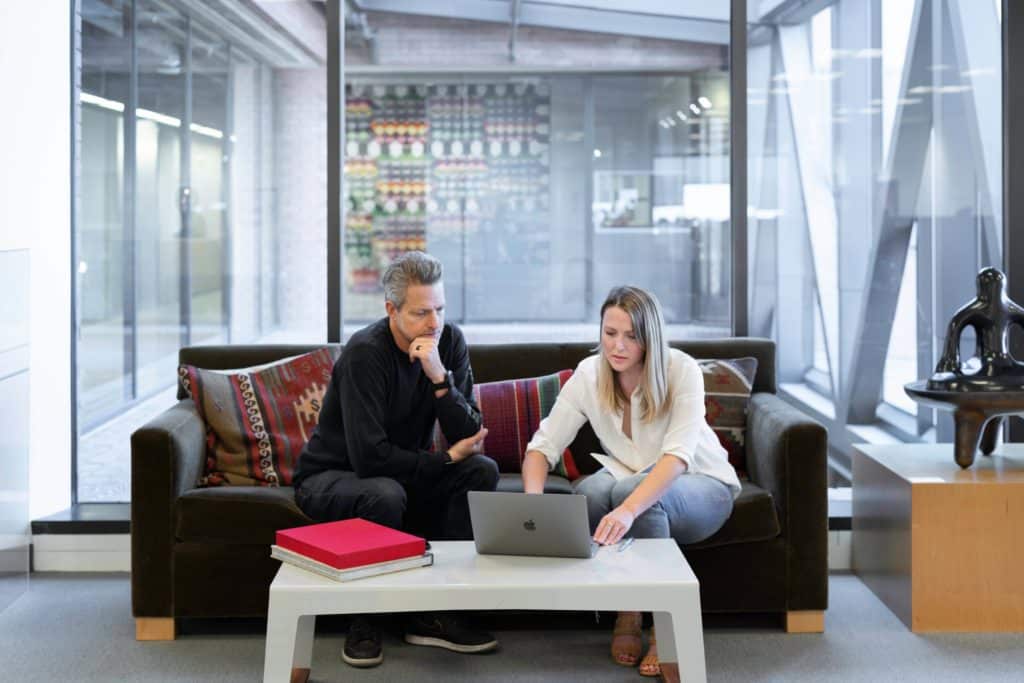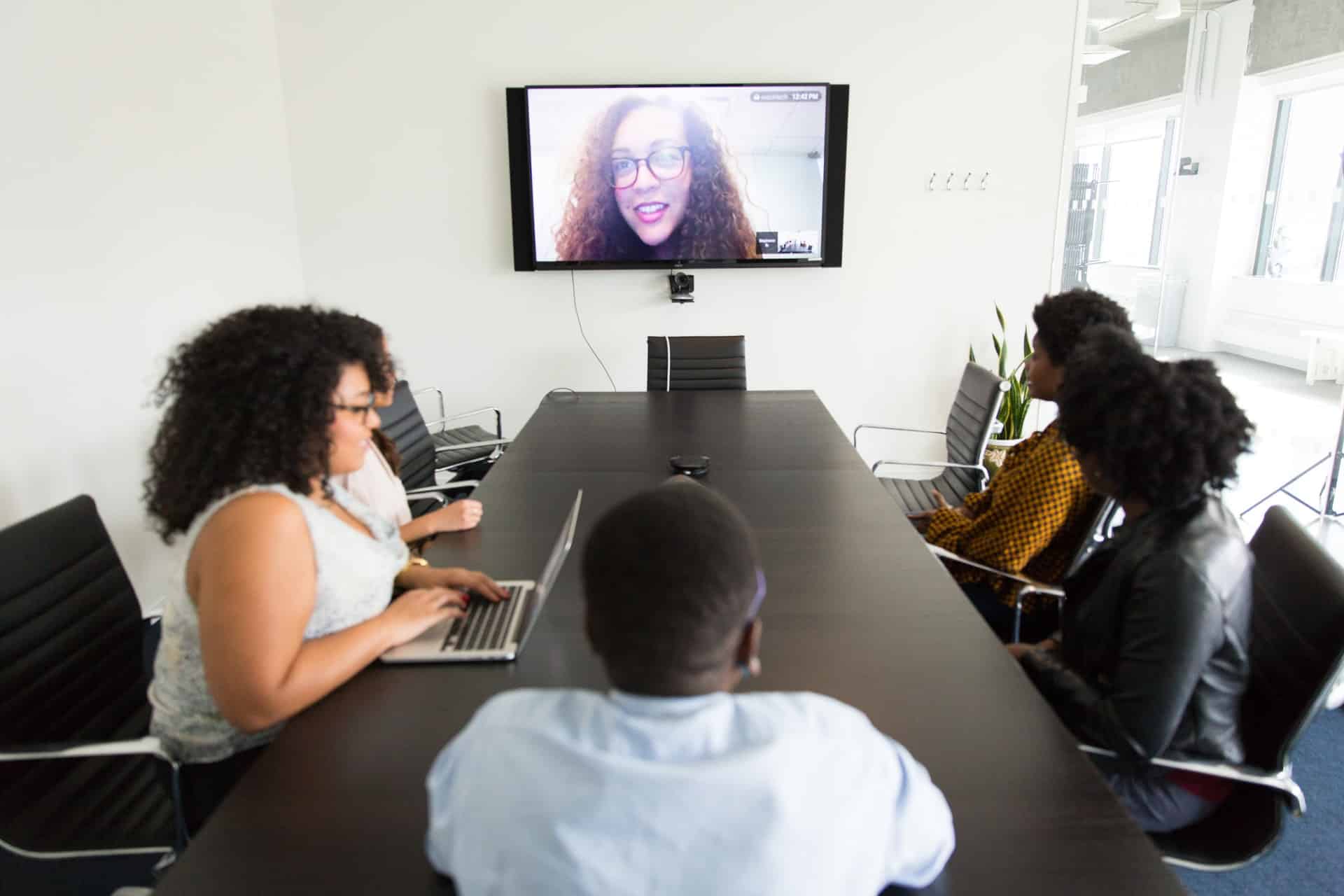Video conferencing is now a regular part of many people’s workdays. While Webex boasts many remote work advantages, making your Webex meetings, webinars and virtual events accessible is essential. One of the most common ways to address inclusivity on the platform is to add captions to your video calls. Verbit’s Webex closed captioning service makes it easy to provide participants with the level of accuracy needed to make the platform accessible to diverse groups of employees.
Webex Closed Captioning Table of Contents:
- The massive growth of Webex and hybrid work
- Does Webex have captioning?
- Why captioning Webex meetings is important
- Webex live captioning for webinars
- Closed captioning Webex video recordings
- How can I add Webex closed captioning?
- How long does it take to create closed captions Webex files?
- Converting Webex closed captioning into transcripts
The massive growth of Webex and hybrid work
Most companies with remote capable positions have already, or will eventually, adopt hybrid work arrangements. A recent Gallup survey found that 53% of these businesses anticipate that they’ll maintain hybrid work arrangements beyond 2022. Another 24% envision wholly remote arrangements, while just 23% plan on maintaining entirely in-person offices.
Webex is meeting the business needs of hybrid workforces. Compelling statistics show that Webex is growing in usage with:
- 650 million monthly call participants
- 8 billion monthly calls
- 36,000 businesses who use the platform for internal purposes
Businesses using Webex should ensure employees and external call participants have what they need to participate with equity, including captions.

Does Webex have captioning?
You can easily add captions to Webex conferences with simple integrations. Integrations are essential because business leaders must be wary of free automatic speech recognition (ASR) options for Webex closed captioning. These solutions often lack the accuracy that businesses need to provide workplace accessibility and present as professional. While Artificial Intelligence is getting better at interpreting human speech on its own, the results can be unintelligible.
Partners like Verbit can be a lifesaver for Webex users. Verbit leverages mature AI to generate Webex live captions but also incorporates professional human transcribers into the process to edit the AI’s work for accurate results. As a result, Verbit offers a reliable, accurate captioning service for Webex users to consider. It’s important to note that this solution isn’t just useful, it’s also critical for many people with disabilities.
Why captioning Webex meetings is important
You’ve likely seen the option to watch with the captions on TV and streaming platforms. Webinars, meetings and other workplace events should be no different. Captions can be a legal requirement based on the circumstances, but offering them proactively has additional benefits.
Accessibility laws and captioning
The Americans with Disabilities Act (ADA) requires that employers accommodate their employees with disabilities. The law also applies to prospective employees and applicants. Now that conferencing tools are an important part of professional life, they must be accessible. Webex live captions allow those who rely on them to follow along in the meeting in real-time. With the right accommodations, people who are Deaf and hard of hearing can participate in virtual meetings with equity.
In certain instances, businesses may need to offer accommodations to the public as well. Some courts can consider websites and other online spaces “places of public accommodation.” In those cases, the ADA might apply to public-facing events. Captioning that content can ensure that events happening via web conferencing are inclusive and can help avoid potential legal pitfalls.
Captions support diverse workplaces
In today’s world, where teams might consist of people in different countries, captions support non-native speakers. Captions also provide better access for people with ADHD and others with varying learning styles. Offering captions on all Webex conference calls is a good way to support all of these employees and create a more inclusive office overall.
Your entire team can focus better with captions
Although professionals may use Webex captions to accommodate people who are Deaf and hard of hearing, studies indicate that everyone benefits from this tool. Captions support retention and comprehension even for people who don’t need them.
Webex live captioning for webinars
According to 74% of B2B marketers, webinars are best for sourcing high-quality leads. After all, webinars are a convenient, cost-effective way to engage with a large audience. However, if you’re not making your webinars accessible, you aren’t reaching as many people as possible.
Adding live Webex captioning is a great way to expand your potential viewership. The National Library of Medicine reports that about one in 20 people in the US identifies as either Deaf or hard of hearing. Captions offer these individuals an opportunity to benefit from webinars. Also, excluding some audience members cuts down on potential leads and sends a message that the organization doesn’t prioritize inclusivity.
Additionally, many people now watch videos with the sound off. Captions allow individuals to follow along with a webinar, even if they are trying not to wake up a sleeping baby or tuning in from public transportation where they can’t play their sound.
Webinars aren’t just for the public though. Many companies are using this format for internal training and announcements. In those cases, the ADA’s requirements for employers set additional accessibility standards. Rather than waiting for an employee to request this service, you can provide captions proactively so that anyone who needs them or prefers them can turn them on.
While live Webex closed captions allow people a chance to participate in interactive events, many potential audience members will choose to view your webinar as a video.
Closed captioning Webex video recordings
Once you record your webinar and post it, it becomes an on-demand video. One recent survey found that most people watch videos on their mobile devices without using the sound. If you want more people to see your video, you should make it as easy as possible to watch it on their terms- which could mean in the doctor’s office or another public place where playing the sound isn’t practical.
Fortunately, if you already took steps to provide live captions, with a partner like Verbit you can easily create an accurate captioning file to accompany the recorded video.
How can I add Webex closed captioning?
Adding captions to Webex meetings is simple. With Verbit, for example, you can do a one-time setup and then simply schedule live captioning sessions whenever you need them. Verbit’s AI and large network of professional transcribers enable a scalable solution, so you don’t need to worry about tricky personnel scheduling issues.
Additionally, when you want to add captions to an existing recording of a Webex call, the process is straightforward. You just upload the file to Verbit’s platform and receive it with accurate captions within a matter of hours or days based on your needs.
How long does it take to create closed captions Webex files?
It’s possible to live caption your events and meetings, which means that the text will appear on screen in real-time. However, Verbit also offers fast turnaround times when it comes to pre-recorded audio and video content. Users can specify what turnaround times they need. Anything from four hours to a few days is possible.

Converting Webex closed captioning into transcripts
Transcripts are another accessibility solution that supports people who are Deaf and hard of hearing, as well as those who struggle with note taking. Transcripts like Verbit’s offer word-for-word text versions of audio and video – both live and recorded. Verbit’s transcripts also identify the speakers so that the reader can easily follow along with dialogues. In addition to their usefulness as an accessibility tool, transcripts have a lot to offer businesses.
Create meeting notes
Transcripts are a good substitute for taking notes during a meeting. When participants don’t have to worry about jotting down everything they’re covering, they can fully engage in the conversation. Additionally, live transcription can help people follow along and catch up if they miss something important.
Use recordings to create other assets
Audio transcription of interviews or Webex webinars can help marketing teams create additional assets. For instance, a webinar filled with expert advice can make a great blog post or eBook. Reviewing audio files to pull direct quotes and content is more difficult than locating the same information in a transcript. Searchable transcripts are especially useful for this purpose.
Make files searchable
With Verbit’s transcripts, you can enter search terms, and quickly locate the relevant parts of the transcript, and the matching time in the video recording as well. You don’t need to scroll through an hour-long video looking for a word because you can pull up the right section in seconds. If you’re trying to remember an important part of a meeting, you can quickly jump to the relevant part of the transcript and recording to refresh your recollection.
Boost SEO
Webinars and video recordings of those live events are great ways to promote your business. However, the audio files do little to support your company’s search engine optimization (SEO) efforts. Using audio and video files to create a transcript means that search engines can crawl your video content. If you used keywords or phrases in the webinar, the transcript will help you get more exposure and mileage from that event.
Verbit’s partners find that using live captioning files to create recorded captions and transcripts is a great way to boost accessibility and efficiency to get the most out of their meetings and events. For instance, The Motley Fool is a finance company that creates a ton of videos and livestreams. Now, it’s using Verbit’s process to caption its content and capitalize on searchability and additional benefits.
As an essential partner for corporations around the world, Verbit makes it easy to provide your employees and consumers with the solutions they need. Contact us to learn more about our Webex captioning, and other tools like audio description that make your business more inclusive.




